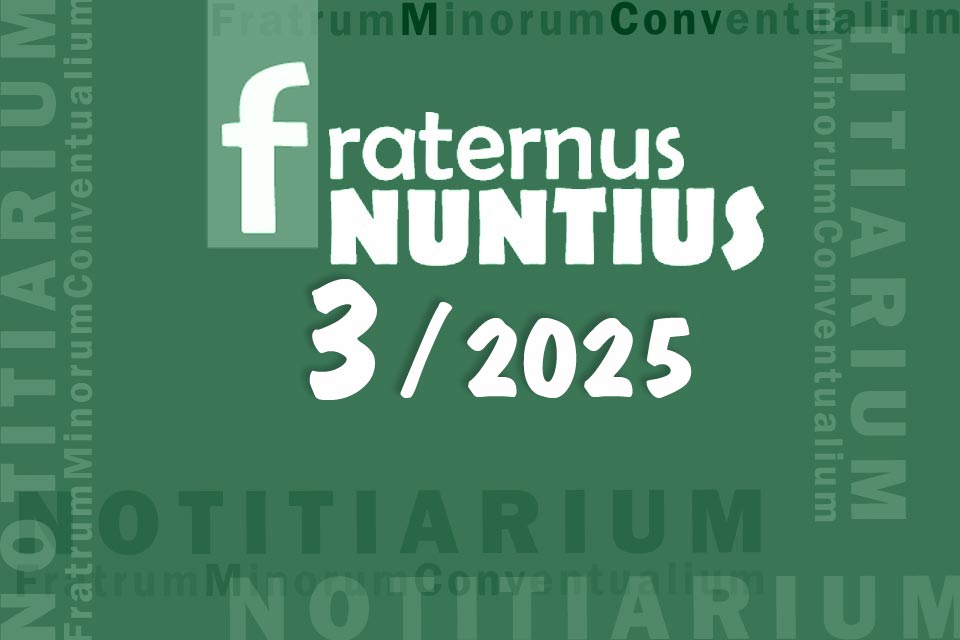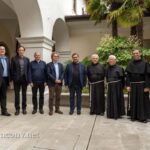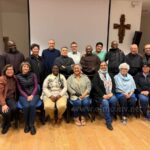The third issue of Fraternus Nuntius for 2025, covering July, August, and September, is now online. The cover, marked by the contrast between the wounds of the world and the hope of rebirth, expresses the tension toward a possible reconciliation, where fraternity becomes the guardian of life and creation.
The issue opens with the Calendar of the Minister General and the joint letter of the Ministers General of the First Order, titled “Audite Sorelle,” a testimony of communion among the entire Franciscan Family (pp. 4–5). This is followed, in the section of the General Secretariat, by the sessions of the General Definitory (p. 6), which offer a glimpse of the decisions that guide the Order’s journey. The Office of Communications presents, among the main news items, the appointment of the Most Reverend Friar Edward KAWA as Bishop of the Diocese of Kamyanets-Podilskyi, Ukraine (p. 14) and the letter “Song of Reconciliation” for the 8th centenary of the composition of the Canticle of the Creatures (p. 19), which invites us to look at history through eyes of faith and gratitude.
In the section for the General Secretariat for Mission Animation (SGAM), our articles on the conclusion of the inter-Franciscan course in Kampala, Uganda, for missionaries in Africa and the meeting in Kigali on a proposed new Conventual Franciscan mission in Rwanda (pp. 20–22), show evangelization that is renewed in dialogue and solidarity. The section on Justice, Peace, and Integrity of Creation (JPIC) devotes ample space to the initiatives of the Season of Creation (pp. 23–29), including the “Renew My House” project, which calls for making a real commitment to our common home.
On page 31, the Office of General Postulation has articles on the fifty years of life and mission of Friar Casimir CYPHER, in Medford, United States, who was an example of fidelity and evangelical witness. Regarding the Secular Franciscan Order (OFS), there is an article on the 4th European OFS-YouFra Congress (p. 32) and the national Chapters celebrated in various regions around the world, a sign of a vital and co-responsible Franciscan laity.
There is an extensive section dedicated to the Federations. The African Federation of Conventual Franciscans (AFCOF) has articles on the professions and jubilees of friars in Ghana, Kenya, Tanzania, and Zambia (pp. 44–53). These attest to the growth of new vocations and the maturity of the young Jurisdictions. The Centralis Europae Foederatio (CEF) has articles on various celebrations in Germany and Austria (pp. 55–63), which underscore the lively presence of the Conventual Franciscans in the heart of Europe. The Conventual Franciscan Federation (CFF), has articles on ordinations and fraternal life in the United States and Ireland (pp. 64–73). These show dynamic fraternity open to service. The Federación América Latina Conventuales (FALC), reports on numerous events linked to formation, professions, and anniversaries (pp. 76–88), which speak to the vitality of religious life in Latin America. In the Federation of Asian Minor Conventuals (FAMC), the variety of celebrations and formation events (pp. 90–99) reflect the enthusiasm of a young and missionary Church in Asia. The Foederatio Europae Mediae et Orientalis (FEMO) reports on celebrations in Poland and Kazakhstan (pp. 100–110), places where memory and future are intertwined in faith. Finally, the Federazione Intermediterranea Ministri Provinciali (FIMP) has articles on initiatives in Assisi and the celebrations for the centenary of the founding of the mission in China (pp. 112–122), set in the context of the 8th centenary of the composition of the Canticle of the Creatures.
The issue concludes with reports on the Provincial and Custodial Chapters in Italy, Tanzania, and Mexico (pp. 124–127), which are an expression of discernment and fraternal service. The final section contains statistical data and lists those “resting in God” (pp. 130–131). These reflect the real and universal face of the Order.
General Office of Communications










